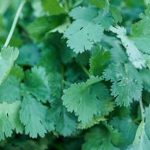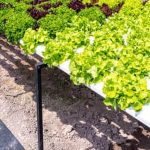Is it safe to use treated pine for vegetable gardens? This is a question that has sparked much debate among gardening enthusiasts and environmental advocates alike.
Treated pine has become increasingly popular in the gardening community due to its affordability and durability, but concerns about the potential leaching of chemicals into the soil have raised questions about its safety for growing edible plants. In this article, we will delve into the topic of using treated pine in vegetable gardens, addressing both the advantages and potential risks associated with this common gardening material.
Treated pine refers to pine wood that has undergone a chemical treatment process to enhance its resistance to decay and pests. It has gained widespread usage in gardening for various purposes, from constructing raised beds to building outdoor furniture.
However, as the popularity of using treated pine in vegetable gardens continues to grow, so does the concern over its safety. The next sections will explore what exactly treated pine is and how it is used in gardening, as well as the potential risks and advantages of incorporating it into your vegetable garden.
While there are undeniable benefits to using treated pine – such as its durability, longevity, and resistance to decay – there are also valid concerns about the potential leaching of harmful chemicals into the soil and ultimately into the plants themselves. In the following sections, we will discuss these risks in more detail and provide insights on ways to minimize them when using treated pine in your vegetable garden.
What Is Treated Pine and How Is It Used in Gardening?
Treated pine is a type of wood that has undergone a preservation process to protect it from decay, rot, and pests. This treatment involves impregnating the wood with chemicals, such as chromated copper arsenate (CCA) or alkaline copper quaternary (ACQ), to enhance its durability and longevity. Treated pine is commonly used in gardening for various purposes, including raised garden beds, planter boxes, and retaining walls.
Understanding the Treatment Process of Pine Wood
The treatment process for pine wood involves placing the lumber in a chamber where it is pressurized with chemical preservatives. These preservatives seep into the wood, creating a barrier against decay and pests. In the past, CCA was a commonly used chemical for treating pine, but due to health and environmental concerns, ACQ has become more widely used.
Explaining the Different Uses of Treated Pine in Gardening
Treated pine is popular in gardening because it is affordable and readily available. It can be used to construct raised beds and planter boxes, providing a durable structure for growing vegetables. Additionally, treated pine can be used for landscaping projects such as retaining walls or edging for garden paths. Its versatility and resilience make it an attractive option for gardeners looking for long-lasting materials.
Overall, understanding the treatment process of pine wood and the various uses of treated pine in gardening is essential for determining whether it is safe to use this material in vegetable gardens. The next section will delve into the potential risks associated with using treated pine in vegetable gardens and explore ways to minimize these risks while reaping the benefits of this versatile material.
Potential Risks of Using Treated Pine in Vegetable Gardens
Discussing Potential Leaching of Chemicals
Treated pine is often pressure-treated with chemicals such as alkaline copper quat (ACQ) or chromated copper arsenate (CCA) to increase its durability and resistance to decay. However, there is a concern that these chemicals may leach into the soil over time, especially in moist conditions. This leaching can potentially contaminate the soil and affect the health of plants, as well as the safety of consuming vegetables grown in such environment.
Exploring Health Risks Associated With Treated Pine
Another potential risk of using treated pine in vegetable gardens is the impact on human health. If the chemicals used in the treatment process leach into the soil and are absorbed by the plants, there is a possibility of these chemicals being ingested by humans when consuming vegetables grown in such conditions.
Long-term exposure to certain chemicals used in treated pine can pose health risks, making it essential to carefully consider whether it is safe to use this material in vegetable gardens.
Weighing the Environmental Impact
In addition to potential health concerns, using treated pine in vegetable gardens may also have an environmental impact. The leaching of chemicals from treated wood can affect surrounding ecosystems and water sources, leading to broader environmental implications. It’s important for gardeners to be mindful of not only their own health and safety, but also the impact their gardening choices may have on the environment as a whole.
Advantages of Using Treated Pine in Vegetable Gardens
When it comes to using treated pine in vegetable gardens, there are several advantages that make it a popular choice for gardeners:
– **Durability:** Treated pine is known for its durability, as the treatment process helps protect the wood from rot and decay. This means that structures built with treated pine, such as raised beds or garden borders, can last for many years without needing replacement.
– **Longevity:** In addition to being durable, treated pine also has a long lifespan. This means that once you invest in treated pine for your vegetable garden, you can expect it to serve its purpose for an extended period of time.
– **Resistance to decay and pests:** The treatment process used on pine wood also makes it resistant to decay and pests, which can be particularly beneficial in a garden setting where exposure to moisture and insects is common.
Overall, these advantages make treated pine a practical choice for those looking to create long-lasting and low-maintenance structures in their vegetable gardens. By carefully considering the potential risks and taking appropriate precautions, gardeners can safely enjoy the benefits of using treated pine in their gardening projects.
Ways to Minimize Risks When Using Treated Pine in Vegetable Gardens
When using treated pine in vegetable gardens, it is important to take certain precautions to minimize the potential risks associated with the chemicals used in the treatment process. Here are some ways to ensure a safer gardening experience when using treated pine:
- Choose the right type of treated pine: Opt for wood that has been treated with safer, less toxic chemicals such as alkaline copper quaternary (ACQ) or copper azole.
- Create a barrier between the treated pine and the soil: Consider lining the inside of the treated pine bed with heavy plastic sheeting to prevent direct contact between the wood and the soil.
- Seal the treated pine: Apply an appropriate sealant or paint to the surface of the treated pine to reduce any potential leaching of chemicals into the surrounding environment.
By taking these precautions, gardeners can still enjoy the benefits of using treated pine in their vegetable gardens while minimizing potential health and environmental risks.
Overall, when it comes to using treated pine in vegetable gardens, taking proactive steps to reduce exposure to any potentially harmful chemicals is essential. With careful considerations and proper maintenance, individuals can create a safe and sustainable gardening environment with treated pine.
Alternatives to Treated Pine for Vegetable Gardens
When considering alternatives to treated pine for vegetable gardens, there are several options that can be explored. Cedar, redwood, and composite lumber are popular choices for gardeners looking for materials that are naturally resistant to decay and pests.
Cedar is known for its natural resistance to rot, decay, and insect damage, making it an ideal choice for raised garden beds or planter boxes. Redwood also possesses similar properties, along with a unique aesthetic appeal. Both cedar and redwood are durable options that do not require chemical treatments, providing peace of mind for those concerned about potential chemicals leaching into the soil.
Composite lumber is another alternative to treated pine that offers the benefit of being made from recycled materials while also being resistant to rot and insects. This type of material requires minimal maintenance and is available in various colors and textures to suit different garden designs.
When considering alternatives to treated pine, it’s important to weigh the pros and cons of each material in relation to one’s specific gardening needs. While treated pine may offer durability and longevity, these alternatives provide safe and reliable options for gardeners looking for sustainable and non-toxic choices for their vegetable gardens.
| Material | Properties |
|---|---|
| Cedar | Natural resistance to rot, decay, and insect damage; no chemical treatments required |
| Redwood | Similar properties as cedar; durable with an attractive appearance |
| Composite Lumber | Made from recycled materials; resistant to rot and insects; available in various colors and textures |
Recommendations and Regulations for Using Treated Pine in Vegetable Gardens
When it comes to using treated pine in vegetable gardens, there are certain recommendations and regulations that one should consider to ensure the safety of the plants and individuals consuming the produce. The chemicals used in the treatment process of pine wood have raised concerns about potential leaching into the soil and its impact on edible plants.
As a result, it is crucial to be aware of any guidelines or regulations set by government agencies or experts regarding the use of treated pine in vegetable gardens.
In order to minimize any risks associated with using treated pine in vegetable gardens, it is recommended to carefully select the type of treated pine being used. Certain treatments may contain chemicals that are more likely to leach into the soil, so opting for alternatives with lower risks is advisable. Additionally, creating a barrier between the treated pine and the soil can help prevent direct contact and minimize any potential chemical leaching.
In some regions, there may be specific regulations or guidelines from government agencies or horticultural experts regarding the safe use of treated wood in gardening. It is important to research and adhere to these recommendations, as they are put in place to protect both the environment and individuals consuming food grown in treated pine beds. By following these recommendations and regulations, gardeners can make informed decisions about whether it is safe to use treated pine for their vegetable gardens.
| Regulation | Recommendation |
|---|---|
| Research local regulations | Select alternative with lower risk |
| Create barriers between soil and pine | Adhere to expert guidelines |
Conclusion
In conclusion, the use of treated pine in vegetable gardens comes with both benefits and potential risks. While it offers durability, longevity, and resistance to decay and pests, there are concerns about the leaching of chemicals into the soil and potential health risks. It is important for gardeners to weigh these factors and make an informed decision based on their individual circumstances.
It is advisable to take measures to minimize the risks associated with using treated pine in vegetable gardens. This includes selecting the right type of treated pine, such as those that are specifically labeled for use in contact with soil, and creating a barrier between the wood and the soil. Additionally, considering alternative materials like cedar, redwood, or composite lumber can provide a safer option for those who are concerned about the potential risks of treated pine.
Ultimately, whether it is safe to use treated pine for vegetable gardens depends on a variety of factors including individual health concerns, regulatory guidelines, and personal preferences. It is important for gardeners to be well-informed about the treatment process of pine wood and any potential regulations or recommendations from government agencies or experts before making a decision.
Frequently Asked Questions
Can You Use Treated Pine for Raised Vegetable Gardens?
Yes, treated pine can be used for raised vegetable gardens, but it’s important to ensure that the treatment is safe for use with edible plants. Look for products that are specifically labeled as safe for use in vegetable gardens and are free from harmful chemicals that could leach into the soil.
Is It OK to Use Pressure Treated Wood in a Vegetable Garden?
While pressure treated wood was traditionally treated with chemicals that could be harmful to humans and the environment, newer formulations are generally considered safe for use in vegetable gardens. However, it’s still a good idea to look for products labeled as safe for garden use and to avoid using pressure treated wood around any edible parts of the plant.
Is Home Depot Pressure Treated Wood Safe for Vegetable Gardens?
Home Depot offers a variety of pressure treated wood products, some of which are labeled as safe for use in vegetable gardens. It’s essential to read product labels carefully and choose materials that meet safety standards for use around edible plants.
Additionally, consider whether you want to take extra precautions such as lining the inside of raised beds with a protective barrier to prevent direct soil contact with the wood.

If you’re looking to get into vegetable gardening, or are just looking for some tips on how to make your current garden better, then you’ve come to the right place! My name is Ethel and I have been gardening for years. In this blog, I’m going to share with you some of my best tips on how to create a successful vegetable garden.





